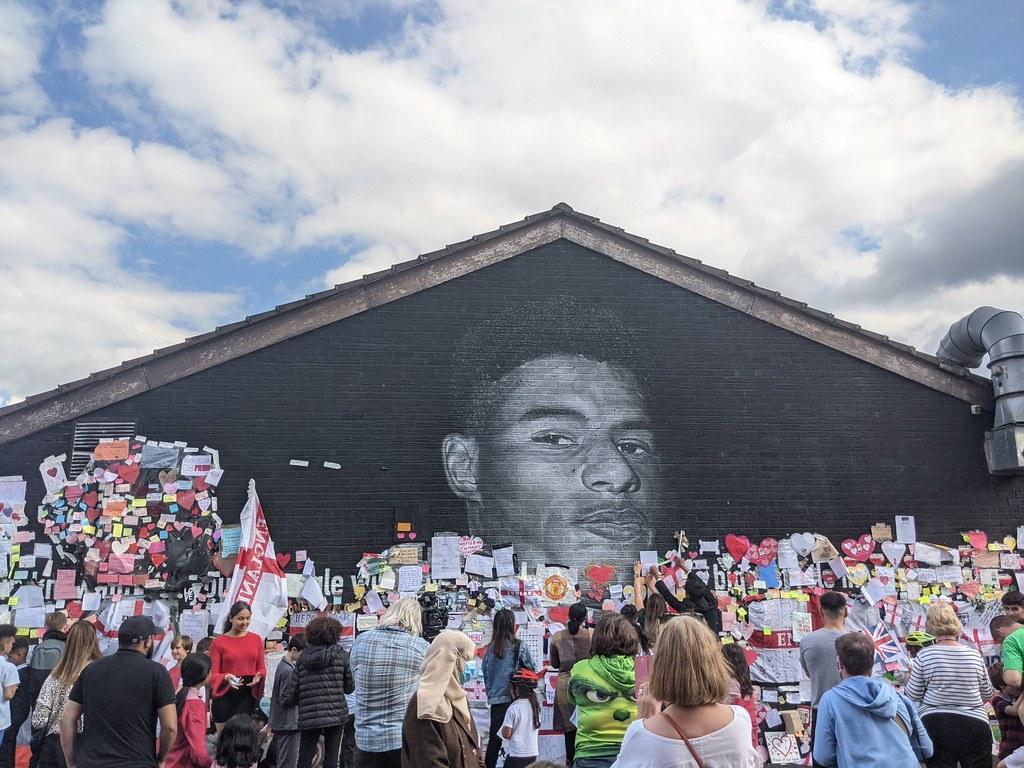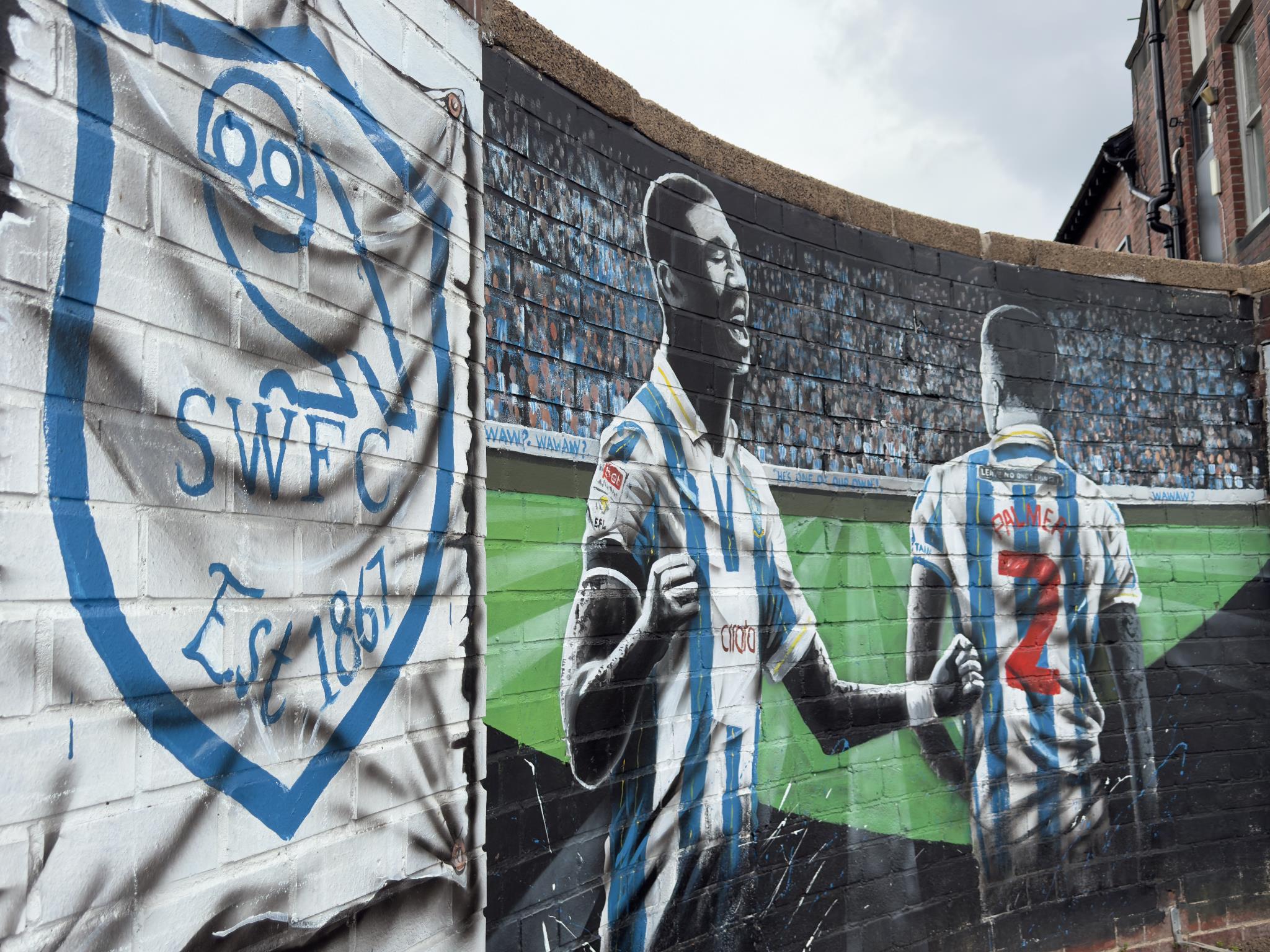In alleyways, underpasses, and on the sides of old brick buildings, a new kind of gallery is emerging – one where the beautiful game takes centre stage. Across major cities, from London to São Paulo, and now in Sheffield, urban street football murals are transforming concrete walls into bold tributes to the sport’s legends, grassroots culture, and deep community roots.
They’re storytelling in paint: a celebration of working-class identity, pride, and the enduring power of football to bring people together. As these vibrant pieces appear across the city, they mark a growing movement where art, sport, and local culture collide – out in the open, for all to see.
Murals as Living Monuments
Street art acts as many things for fans of the beautiful game. One of these is the ability to tap into a memory of the past, reliving the greatest moments and players in a club or country’s history. Murals help to preserve a visual record of moments that have shaped sporting history.
Trent Alexander-Arnold now moves onto a new chapter in his footballing career. With a move to Real Madrid ending a 20 year stay at Liverpool FC, the Reds’ fans will never forget his mass contribution to the club’s progress. Now take the impressive mural that looms over Sybil Road in Anfield. It’s not just a tribute to local talent but a rallying point for pride, reminding young kids that greatness can come from their very doorstep.

John Clarke, lead of art and sculpture at the Sheffield Home of Football Charity says: “We want our artwork to not only symbolise something but also to open up people’s minds to what was happening in the city at the time of the event.
“These things are meant to unite the city into embracing its sporting past.”
This approach reflects a deeper purpose behind football-themed street art – not just to honour the game, but to embed it within the social and historical fabric of the city. Murals, in this context, become more than aesthetic tributes; they act as visual time capsules. These images nudge passers-by to re-examine the city’s identity, to uncover forgotten stories, and to reconnect with a sense of collective pride.
Murals as Commemorations
Murals don’t just celebrate the past; they also serve as powerful prompts for what the future holds – visual markers that tie together history, achievements of the present, and hope for the future.
In Sheffield, one such example is the mural of Liam Palmer, a lifelong Wednesdayite, painted just a stone’s throw from Hillsborough Stadium. Far more than a depiction of a local footballer, the mural is a symbol of enduring loyalty and homegrown pride.
Rather than glorifying a distant past, the mural points toward a shared future – one where local talent is nurtured, celebrated, and believed in. It transforms a brick wall into a beacon of aspiration, showing that the beautiful game still has the power to uplift communities, and that success doesn’t always have to be bought – sometimes, it’s built right at home.
Paul Staveley, artist of the Liam Palmer artwork said: “The mural was Millie Bright’s idea (England women’s captain), she had it commissioned to celebrate Liam’s testimonial match.”
This is a clear indication that murals such as this are not just for the fans but for all figures within football – players wishing to commemorate each other’s achievements pay dividends in the plans for street artwork.
A Polarising Nature
While football murals can ignite pride and community spirit, they can also be divisive, as John explains: “A lot of the murals around the city are nature-based, which is fine and are largely left untouched by the non-artistic graffiti artists and in most cases add a bit of colour to the city.
“When it comes to football it opens up a can of worms.”
Football inherently carries tribal loyalties, rivalries, and deeply personal affiliations – what inspires one community can provoke another. Murals of players or clubs can become unintended flashpoints, vulnerable to vandalism or used as canvases for rival taunts.
In some cases, this tension challenges the very goal of street art as a unifying force, highlighting the delicate line between celebration and confrontation in a sport that, while beloved, can stir intense passions and longstanding divisions.

Those not affiliated with the beautiful game may appreciate the site of the aforementioned “nature-based” art and see it as a light-hearted nod to the city’s character. However, football murals may instigate a feeling of hooliganism and the negative side of the game.
In cities like Sheffield, Glasgow, or Manchester, where allegiances are sharply drawn, football murals also sometimes become targets of defacing, painted over out of pure footballing tribalism. What was intended as a gesture of pride or community identity can quickly become a canvas for rival slogans, taunts, or even hate speech.
Nevertheless, football-themed street art has emerged as a powerful cultural force. Murals like the one of Liam Palmer near Hillsborough don’t just honour what’s already happened, they inspire what’s possible. Ultimately, the rise of football murals indicates something far more important than a mere painting.
Vibrant, sometimes volatile, but always vital.

